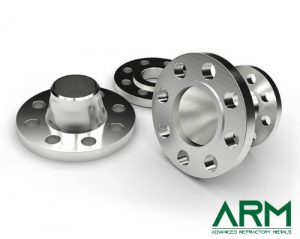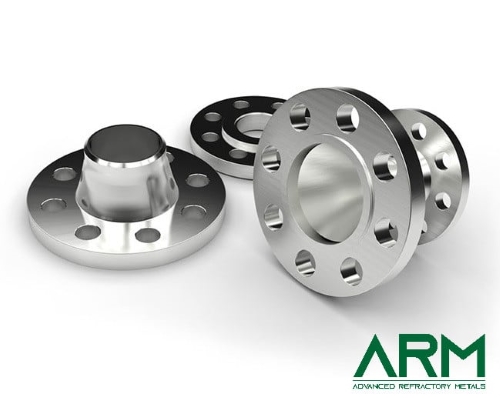Introduction
Tantalum flanged connections are critical components in piping systems, especially in industries dealing with corrosive environments and high temperatures. Tantalum, known for its excellent corrosion resistance and high melting point, is an ideal material for such applications. This article covers the essential design considerations for implementing tantalum flanges, focusing on pressure ratings, sealing techniques, and other critical factors.

Material Properties of Tantalum
Understanding the material properties of tantalum is fundamental to designing effective flanged connections:
– Corrosion Resistance: Tantalum is highly resistant to corrosion by acids, including sulfuric, hydrochloric, and nitric acids.
– High Melting Point: With a melting point of 3,017°C, tantalum can withstand extreme temperatures.
– Ductility and Strength: Tantalum is both ductile and strong, making it suitable for forming and joining processes.
Pressure Ratings
The pressure rating of tantalum flanged connections is a crucial factor in design:
– Pressure Classes: Tantalum flanges must be rated according to the pressure classes of the piping system. Common classes include 150, 300, 600, and higher.
– Wall Thickness: The flange’s wall thickness should be sufficient to handle the system’s maximum operating pressure without deformation.
– Safety Margins: Incorporate appropriate safety margins to account for variations in operating conditions and potential pressure surges.
Sealing Techniques
Effective sealing is essential to maintain the integrity of the flanged connection:
– Gaskets: Select gaskets compatible with tantalum and the fluid being transported. PTFE (polytetrafluoroethylene) gaskets are often used due to their chemical resistance.
– Surface Finish: Ensure the flange faces have an appropriate surface finish to achieve a reliable seal with the gasket. A smooth, flat surface minimizes the risk of leaks.
– Bolt Tightening: Proper bolt tightening techniques are critical. Use a star-pattern tightening sequence and torque wrenches to ensure even gasket compression and prevent flange warping.
Design Standards and Codes
Adhere to relevant design standards and codes to ensure safety and reliability:
– ASME B16.5: This standard covers pipe flanges and flanged fittings, specifying dimensions, tolerances, and pressure-temperature ratings.
– ASTM Specifications: ASTM B521 and other relevant specifications provide guidelines for the properties and testing of tantalum materials.
Thermal Expansion Considerations
Tantalum’s coefficient of thermal expansion should be considered in the design:
– Differential Expansion: Account for the differential thermal expansion between tantalum flanges and connected pipes made of different materials.
– Expansion Joints: Use expansion joints or flexible couplings to accommodate thermal expansion and prevent excessive stress on the flanged connections.
Installation and Maintenance
Proper installation and maintenance are vital for the longevity of tantalum flanged connections:
– Installation Procedures: Follow manufacturer guidelines for installing tantalum flanges, including proper alignment and torque settings.
– Regular Inspections: Conduct regular inspections to detect any signs of wear, corrosion, or leakage. Early detection allows for timely maintenance and repair.
– Replacement Parts: Ensure that replacement gaskets, bolts, and other components are compatible with tantalum to maintain the integrity of the connection.
Cost Considerations
Tantalum is an expensive material, so cost considerations are important:
– Cost-Benefit Analysis: Conduct a cost-benefit analysis to justify the use of tantalum flanges, especially in critical applications where failure is not an option.
– Alternative Materials: Consider alternative materials for less critical applications to reduce costs without compromising performance.
Conclusion
Designing tantalum flanged connections requires careful consideration of material properties, pressure ratings, sealing techniques, and adherence to industry standards. By understanding and addressing these factors, engineers can ensure the reliability and longevity of piping systems in highly corrosive and high-temperature environments. Proper installation and maintenance further enhance the performance and safety of tantalum flanged connections, making them a valuable choice for demanding industrial applications. For more details, please check Advanced Refractory Metals (ARM).
